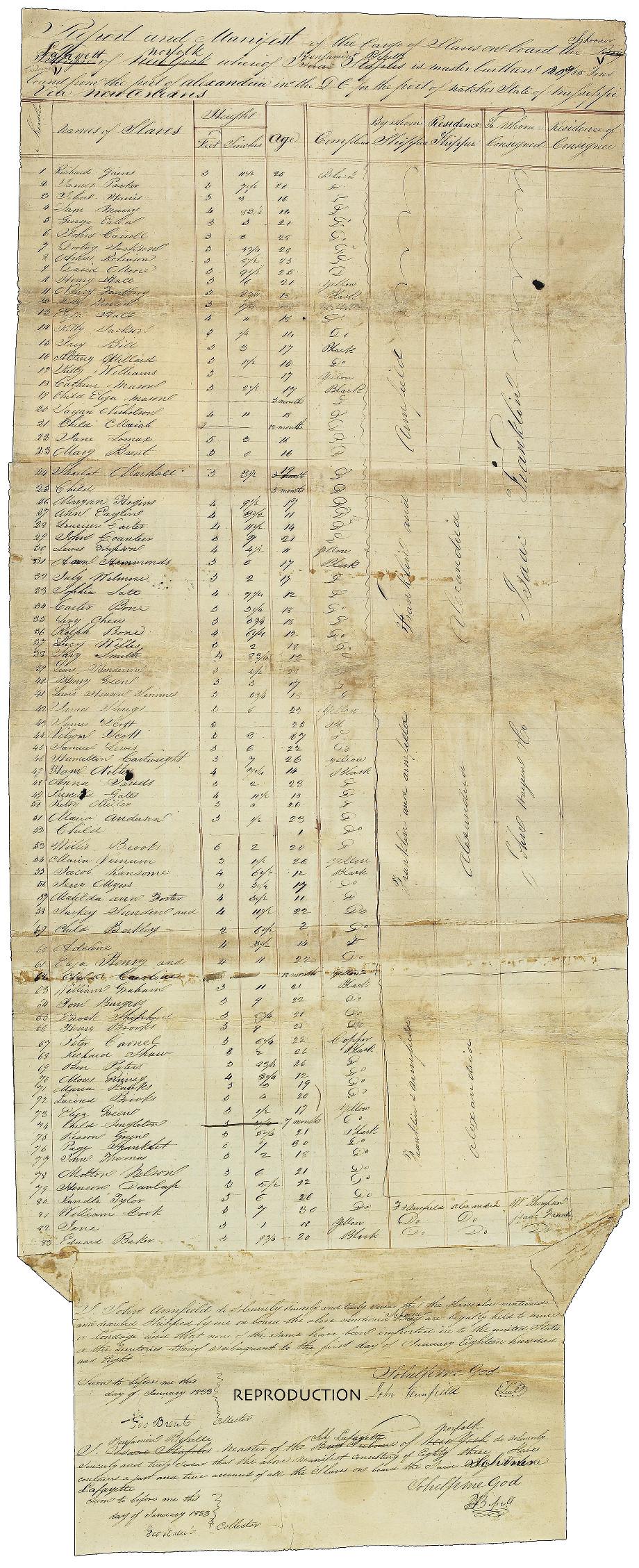The Vault is Slate’s history blog. Like us on Facebook, follow us on Twitter @slatevault, and find us on Tumblr. Find out more about what this space is all about here.
This manifest documents the names, heights, ages, and “complexions” of 83 enslaved people shipped on the schooner LaFayette from Alexandria, Va., to Natchez, Miss., in 1833.
The Smithsonian included this item in its new book, Smithsonian Civil War: Inside the National Collection, because the document shows how the 1807 laws outlawing the import of slaves did nothing to stop a thriving internal slave trade. The firm Franklin and Armfield, which operated out of Alexandria and shipped the people documented on this manifest, profited greatly from this market.
Franklin and Armfield bought people in the upper South—Virginia, Maryland, Tennessee—and shipped them “down the river” to sugar and cotton planters in Louisiana and Mississippi, where they often worked in much harsher conditions. Slave owners would threaten recalcitrant workers with such a transfer. (This is where the idiom “sold down the river,” used to indicate betrayal, comes from.)
The manifest emphasizes how squarely the passengers’ histories and futures lay in the hands of the traders. The columns “By whom shipped,” “Residence shipped,” “To whom consigned,” and “Residence of consignee” are filled out in blanket form, with Franklin and Armfield’s names written sideways up and down the column.
Most of the enslaved passengers were in their teens or 20s—the age at which it could be expected that they might be able to labor in the fields of the Southern plantations. Only two of the 83 are more than 6 feet tall. Two infants, on lines 23 and 52, are listed solely as “Child.”
Click on the image below to arrive at a larger zoomable version.

Manifest for the schooner LaFayette. From Smithsonian Civil War: Inside the National Collection (edited by Neil Kagan).